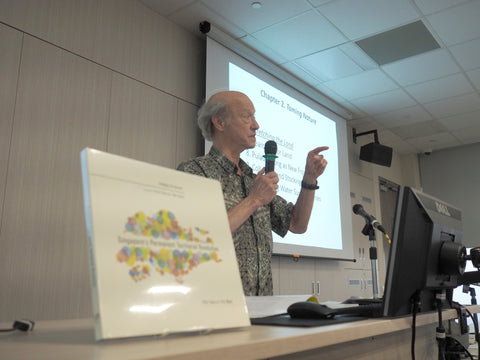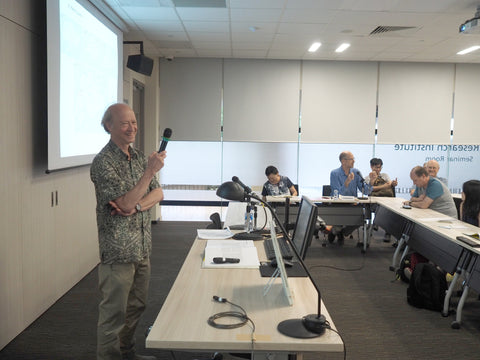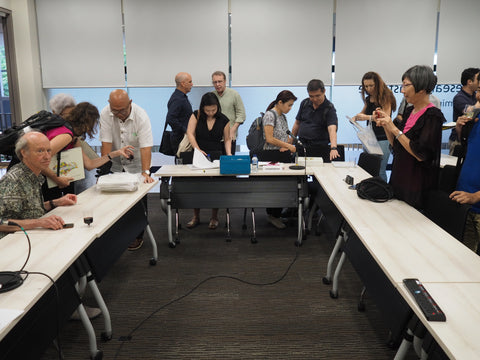News
Follow NUS Press on
The Challenges of Mapping Singapore’s Permanent Territorial Transformations June 2, 2017 14:30
On May 29, Professor Rodolphe De Koninck launched his latest book, Singapore’s Permanent Territorial Revolution: Fifty Years in Fifty Maps, at the National University of Singapore’s Asia Research Institute. As the third book in a series of Professor De Koninck’s noted atlases—the first was released in 1992, and the second, in 2008—the event saw a huge turnout consisting of local artists, students, heritage advocates, and established local academics.
(Image credit: Sebastian Song)
Professor De Koninck described his early fascination and subsequent research on farmers and vegetable traders in a post-colonial Singapore. He related how his series of atlases was borne out of an unnerving sense of displacement he felt as a returning researcher, having lost his bearings many times in a constantly developing Singapore. In particular, he recalled being struck by the aspirations of his Singaporean friends who, despite having their daily lives dramatically altered by the massive urban transformations of the late 20th century, had taken in all these changes without complaint.
“No other city in the world experiences such rapid and systematic transformations.”
(Image credit: Sebastian Song)
Comparing the urban developments that have unfolded in capitals across the world, Professor De Koninck declared that the territorial evolutions of Singapore are of an unprecedented scale, subsequently proposing the hypotheses at the heart of his book: (1) the resignation of Singaporeans towards socio-economic transformations are in part due to the permanent transformations of the urban landscape, and more importantly, (2) the transient nature of local spaces allows for only a single dimension of territorial allegiance: that of the Singaporean state.
“Nothing is sacred, nothing is permanent, nothing is culturally untouchable.”
(Image credit: Patricia Karunungan)
Bringing the audience into a preliminary view of his book, Professor De Koninck presented the nature of territorial alienation faced by Singaporeans through a vast and fascinating series of maps. These included: the diachronic mapping of changes in the population spread, the distribution of religious places of worship, military training grounds, burial sites and the like. The constant marginalisation, and in some cases, destruction, of culturally sacred spaces, he argued, has precipitated a cultural phenomenon in which “nothing is sacred, nothing is permanent, nothing is culturally untouchable”.
Throughout the talk, Professor De Koninck also debunked several myths—such as that of land scarcity—and raised keen observations surrounding changes in the territoriality and topography of Singapore, such as the non-intentional softening of violent urban transformations in the effervescence of nature alongside roads.
(Image credit: Sebastian Song)
At the end of the talk, Professor De Koninck and members of the audience engaged in a heated Q&A session where they grappled with issues surrounding territory and topography, the alienation of heritage and history from individuals, as well as the politics of identity.
(Image credits: Sebastian Song)
In light of the increasing and galvanising public outcry surrounding the demolition of sites such as Bukit Brown Cemetery, the lessons to be gleaned from Singapore’s Permanent Territorial Revolution, in particular, its comprehensive insights into a Singapore rarely remembered, are now more relevant than ever.
The book is available for purchase in-store at NUS Press and on our online webstore.







